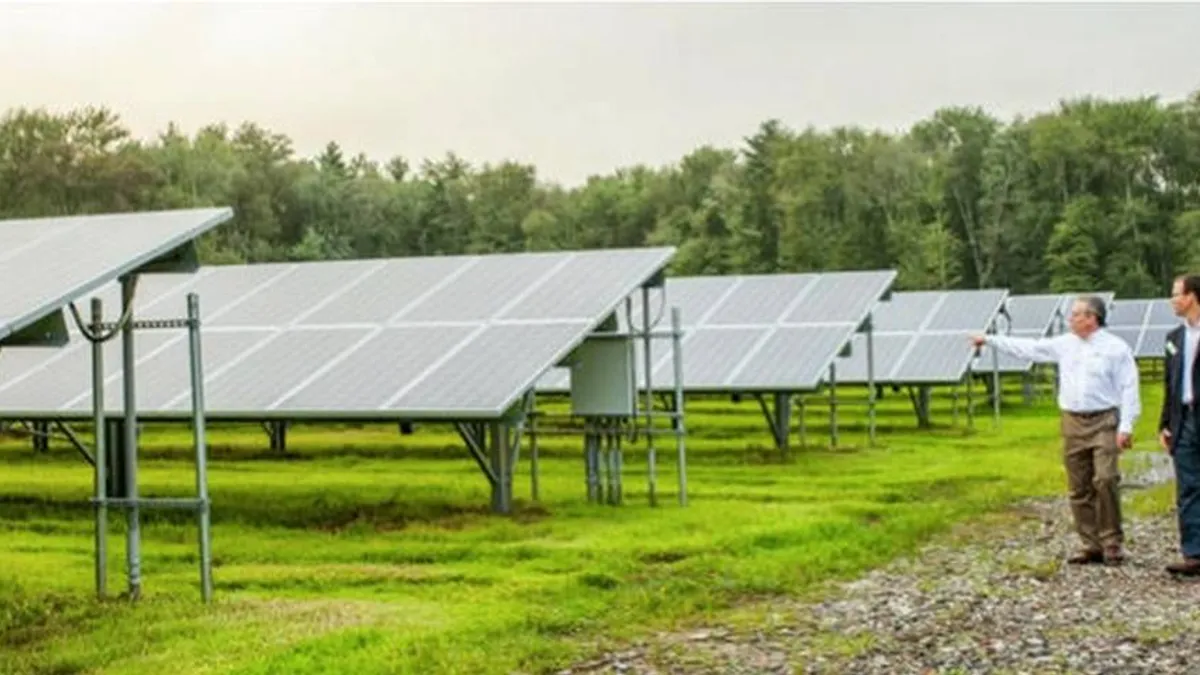The New York ISO released a wide ranging report Thursday on its electric grid, predicting a declining load for the next decade with distributed solar largely to blame.
The state's grid is undergoing a transformation right now, driven by a mix of public policy and emerging technologies. Its Reforming the Energy Vision strategy aims to rethink how the utility sector operates at the same time an array of grid edge innovations have become practical.
Difficult choices ahead
Declining load combined with low gas prices is good news for consumers' bottom line, but when combined with a need for new infrastructure, it means the grid operator is faced with some difficult choices moving forward.
The state finds itself divided, said ISO Executive Vice President Richard Dewey. While the upstate region is largely supplied by a mix of nuclear and wind, the downstate wires are still dominated by fossil fuels. A major challenge is finding a way to bring more emissions-free energy into load centers in and around New York City.
“Demand, which for many decades experienced pretty steady growth within New York state, has flattened out a bit and in many respects has started to decline, both in terms of energy consumption and how it impacts the electric peaks," Dewey said in a conference call with journalists on Thursday.
The ISO's Power Trends 2018 report found demand on the bulk power system is expected to decline over the next decade at a rate of 0.14% per year. Peak demand will decline as well, though slightly less, at a pace of 0.13% per year through 2028.
"We see this continuing into the future," said Dewey, who cited behind-the-meter solar, and to a lesser extent efficiency, as the causes.
Building codes and appliance standards, along with programs and policies aimed at encouraging efficiency, are expected to reduce New York's peak demand by 245 MW in 2018 and by 2,262 MW in 2028.
Wholesale energy prices are “at historic lows,” he said, which is "great for consumers, but it creates some concerns when you start thinking about the viability of the generation fleet and the willingness of investors to make investments in some of those assets."
Transmission investments
The state also needs investment in its transmission system, particularly if it is going to move more renewable energy to downstate markets. More than 2,700 MW of transmission capability has been added since 2000 and "further upgrades and enhancements ... are being planned in response to New York State public policy-related transmission expansion needs," the report notes.
This year, NYISO is evaluating proposals to expand transmission capability within existing rights of way in the Central New York-Hudson Valley transmission corridor. "Once constructed, the project will increase the flow of renewable energy from upstate to downstate," the report says.
The ISO has 96 MW of offshore wind proposed for interconnection on Long Island, the first of its kind for the grid operator. While the offshore wind industry is just beginning to build steam, it may be a long-term solution to some of the downstate energy needs, as offshore resources would likely be closer to load centers than upstate hydro.
And offshore wind has some advantages over onshore, said Dewey. Offshore resources have been shown to operate at a capacity factor of about 40% compared with 26% for onshore wind. But not everyone is convinced about the viability of offshore wind: NextEra CEO Jim Robo said the economics for offshore wind projects are bad for customers during an earnings call in April.
Energy storage is also showing "a very promising future," he said, and if deployed in the right locations, it "could significantly reduce the peak we see in our demand curve" and could help to avoid an excessive transmission buildout.
Distributed resource value
Looking ahead, distributed resources will continue to grow and Dewey said they "hold tremendous value."
"If sited properly, they could address resiliency issues and provide a whole lot of options for distribution and transmission operators," he said. "But it does add a lot of complexity to the grid."
New York is also targeting 1,500 MW of storage capacity to be installed by 2025, and the ISO said it anticipates investments on both sides of the meter. For those installations behind the meter, the grid operator expects to integrate them through its distributed energy resources "roadmap" initiatives.
"NYISO anticipates a new participation model to fully exploit the capabilities that new storage technologies can offer in terms of balancing system variability and supplying capacity during critical peak periods," the report said
The state will also need to deal with its aging gas generation soon. This year, 866 MW of steam-turbine generating capacity in the ISO is more than 60 years-old. Nationally, 95% of similar capacity of that age has been shuttered. For gas turbines, 2,356 MW of capacity in the state is 46 years of age or older and about 95% of those have also been deactivated nationally.
"By 2028, more than 8,300 MW of gas-turbine and steam-turbine based capacity in New York will reach an age beyond which 95% of these types of capacity have deactivated," the report said. "While there have been significant additions to New York’s generating capacity since 2000, power plants age like all physical infrastructure. The need to maintain, upgrade, or replace aging generation infrastructure requires attention."






















